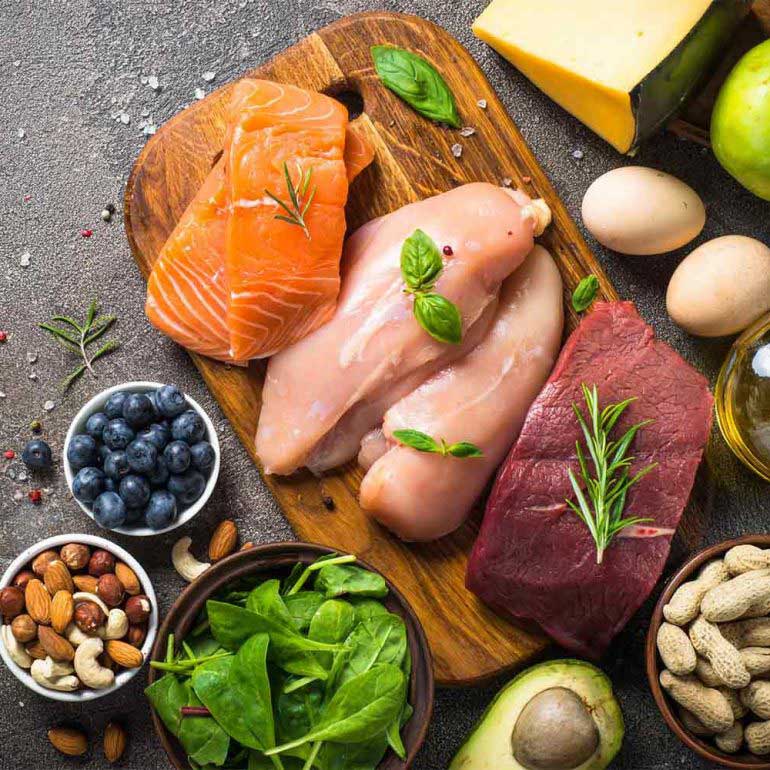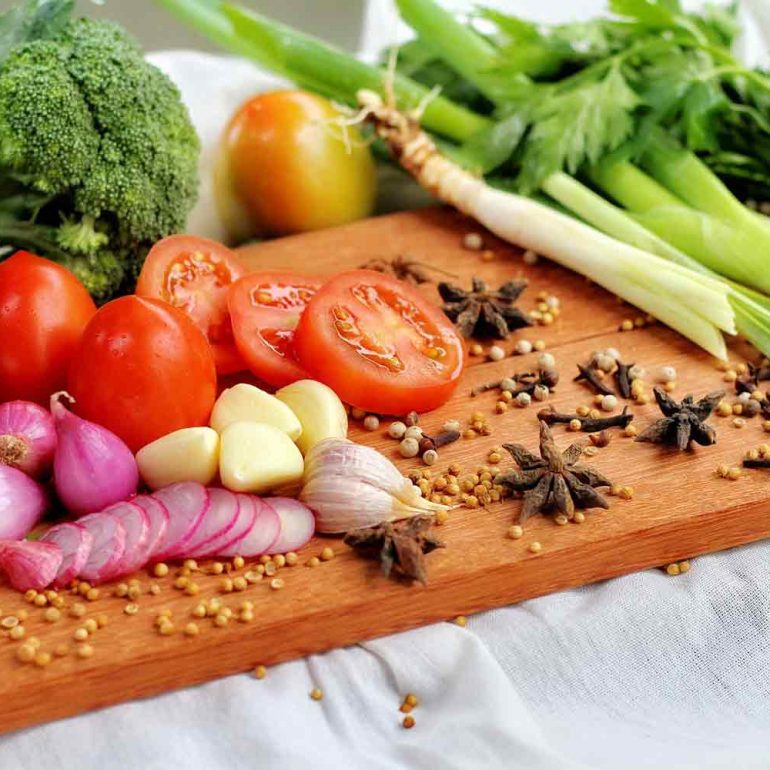Soon we will be enjoying the longer days and warmer weather of the spring and summer. It’s such a joy to be out on our bikes and taking some fabulous hikes in nature. These warm days also mean that it’s time to break out our summer recipes.
The foods that are most needed when the weather is warm are salads, fruits, green vegetables, and those that involve lighter cooking. A quick vegetable stir fry is one of our favourites, with a huge fresh salad and one of my delicious dressings.
In macrobiotics and traditional Chinese medicine, this is the time of year that our heart and small intestine present themselves for their “annual service,” so to speak. The changing of the seasons is more than simply re-organising your wardrobe. The body craves the change of food and cooking styles of each season.
Diseases of the heart are provoked by eating too much meat and dairy, causing the blood to thicken and the arteries to become clogged with excess fats. Reducing oil content (fat content) and sugar content are things I always teach in my summer workshops. The light and simple foods of summer are helpful for anyone having these problems at any time of the year. Raw vegetables and lightly cooked dishes help restore the balance and calm the system.
The roots of the body are deep inside the small intestine where nutrients are absorbed. It is here that they enter the bloodstream and are distributed to the body’s cells. It’s the primary site for absorption of nutrients. It is the home of the major microorganism colonies in the body where food is digested, along with pancreatic enzymes. Nutrients are absorbed through the villi, small root-like structures on the intestinal lining.
Ninety percent of digestion and absorption takes place in your small intestine, so be kind to your small intestine by chewing well before you swallow, particularly complex carbohydrates, as they are digested in the mouth by an enzyme called amylase. The food then passes into your stomach, and proteins are worked on by protease. From there, the bolus of food passes into your small intestine, where lipase begins to break down fats, and amylase finishes off the carbohydrates.
There are so many ways to be creative and add different tastes to your salad dishes. One of my favourites is to combine a selection of sea vegetables.
Mixed Greens and Cucumber Wakame Salad
Dark green leaves of the sea are loaded with such a broad spectrum of nutrients that are not readily available from land vegetables. One of the most delicious ways to introduce sea vegetables into your diet is to create tasty dressings. The variety of vegetables and the light citrus dressing make this wakame salad flavourful and easy for people to enjoy, particularly if they are new to using sea vegetables.
Ingredients
- ¼ cup Clearspring wakame seaweed flakes soaked in warm water until soft (15 minutes)
- 2 baby cucumbers thinly sliced
- 5 red radishes thinly sliced
- ½ roasted red bell pepper, thin julienne strips
- 3 spring onions, minced
- 2 tsp Clearspring red wine vinegar
- 2 tsp Clearspring brown rice vinegar
- Juice of each: 1 orange, lime, lemon
- 1 tsp Clearspring tamari soya sauce
- 1 tsp Clearspring mirin
- 4 cups mixed salad greens
Directions
Drain and squeeze water from the wakame. Combine the wakame, cucumber, radishes, roasted red pepper, and spring onions in a mixing bowl. Whisk together the vinegars, citrus juices, tamari and mirin in a small bowl adjust the seasonings to your taste. Stir dressing into vegetable mixture and toss to combine. Set aside to marinate for at least one hour before serving to allow flavours to develop. Arrange the mixed salad greens on a plate and spoon the marinade vegetable mixture over the top.
There are many so-called “healthy” desserts that I see clients eating daily that create nutritional stress and contribute to their health problems. These desserts are high in fats and sugar and many of the combinations used in them are not easily digested. Keep your desserts simple by using delicious sweet fruits and berries. This is a delicious dessert using pears – which happen to be Mr. Tara’s favourite.
Remember that each sugar category has its refined and unrefined products. For a more stabilizing effect on blood sugar, reach for fruit first.
Star Anise Poached Pears
Ingredients
- 1 cup apple juice
- 2 tbsp brown rice syrup
- 2 tbsp plus 1½ cups water
- 3 whole star anise
- 4 whole cloves
- 1 cinnamon stick
- 1 vanilla pod
- 4 medium-size firm but ripe pears, peeled
Directions
Combine apple juice, brown rice syrup, 2 tablespoons water, star anise, cloves, cinnamon stick and vanilla pod in a large, heavy saucepan. Stir over low heat until simmering. Increase heat and boil without stirring until syrup turns deep amber, occasionally brushing down sides of pan with a wet pastry brush. After 10 minutes remove from heat. Add 1½ cups water and stir to mix. Pop in the pears, cover and simmer until tender, turning pears once, about 5 minutes.
Using a slotted spoon, transfer pears to a bowl. Continue to cook the liquid in saucepan until thick and syrupy, about 5 minutes, add a little more brown rice syrup for desired consistency. Pour syrup over pears and chill until cold.
Enjoy your summer!
In good health.
A long-time vegan, lover of animals, nature and life and passionate about human ecology. As an eternal optimist, increasing the number of people worldwide to switch to a wholefood, plant-based diet and vegan lifestyle is her mission. Together with her husband Bill Tara, they have created The Human Ecology Project.




